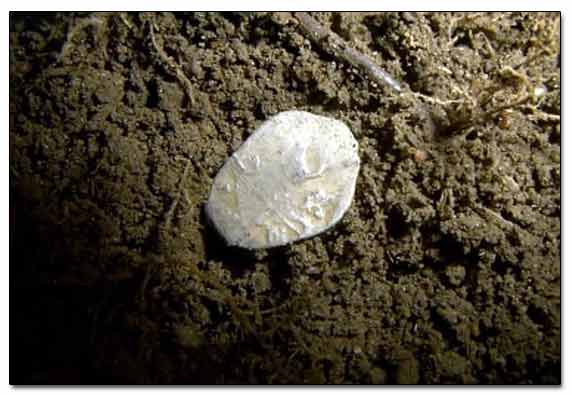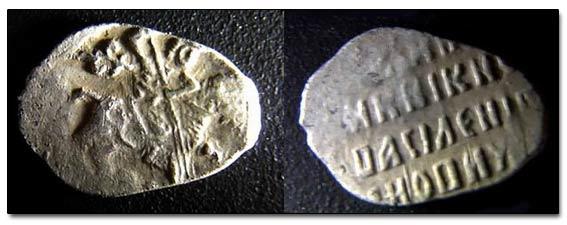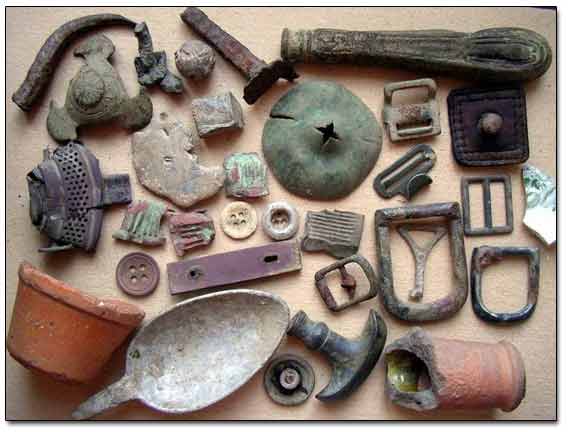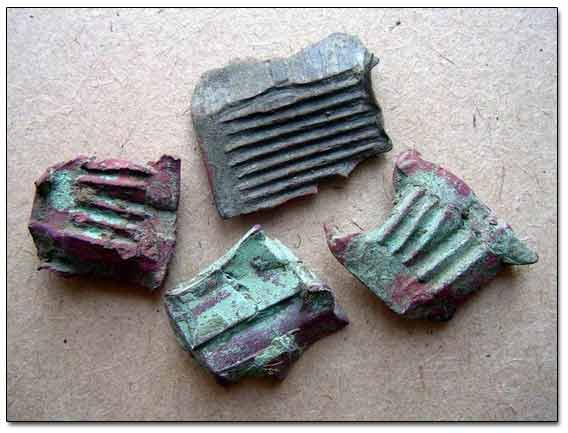Metal Detecting at Medieval Village Kozheritsy Site, page 6
Both Every Whisper Signal and A Hint To It Should Be Investigated At The Old Site
I finally took a break and assessed the situation: the finds had been a mix of modern and old stuff, so far, the oldest from 17th century. But the village was established 400 years prior to that! I thought that if the older targets were deeper, maybe, I should increase the sensitivity of my Explorer.
In that case, I would lose depth as the soil's mineral content was extremely high. Plus, I would have to deal with lots of false signals. I decided to try that and also increased the sound volume of my Koss headphones. It worked as I received a faint signal. The conductivity read at "medium." The signal was "soft" and consistent as I moved the coil in all directions.
The depth indicator showed the target's depth at 9 inches. I had never heard a signal like this before so my curiosity was rising up every second. I cut a nice dirt plug out and scanned it with a search coil, the signal was there! Then I kept splitting the plug in halves while checking each one until I had just a small piece of dirt in my hand.
The signal was there but I still could not see anything. Without gloves, I began investigating every small lump of dirt. Suddenly I noticed a tiny shining piece that looked like a fragment of a pull-tab tongue.
I almost threw it away when I noticed some tiny writings and symbols on it. I turned the piece trying to catch the sun reflection off its surface. I barely could hold it between my fingers. Finally, there they were: I saw the words written in Old Russian language! Wow!
My First Hammered Silver Coin!

Right away, I remembered other treasure hunters' stories about the difficulties they experienced while detecting the Early Russian coins. These coins are called "Wire Money" because of the way they were minted. To make such a coin, a small piece of silver wire was cut off and hammered flat, then, a design was hammered on it (a detailed description of the Method of Striking Wire Coins wiil be posted soon). These coins earned a slang name "Fish Scales" because of their small size, thinness and oblong shape. The size of this Fish Scale was 5 mm by 9 mm.
A Find Of The Day

I could not believe that I found my first silver hammered coin! I could not wait to get back home and look it up in the coin catalogue. I was happy that I managed to detect such an elusive coin and that my Explorer was capable of picking it up at good depth. Most of all, I was happy that I learned a new and very important signal. This small knowledge enabled me to make more interesting discoveries later.
The story would not be completed without a picture of other finds (not junk). Surprisingly, the artifacts looked like the stuff I would usually dig up around old cellar holes in Upstate New York.

The most hated targets by Russian treasure hunters are the fragments of brass belt that was set around the WW2 artillery projectile for improving its dynamics. These fragments or splinters always give a solid coin signal and are abundant in Western Russia.
They Would Drive Anyone Crazy
